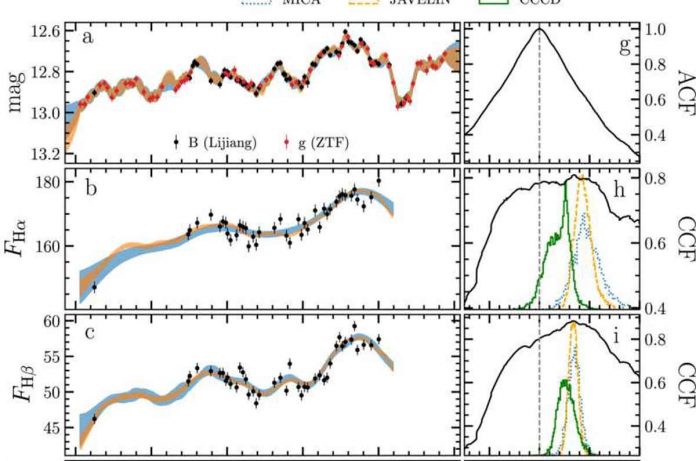Dr. Li Shasha and Dr. Feng Haicheng of the Chinese Academy of Sciences’ Yunnan Observatories, along with their collaborators, discovered evidence for the kinematic evolution of the broad-line region of active galactic nuclei.
On August 31, their findings were published in The Astrophysical Journal.
During 2020-2021, the researchers used the 2.4-m telescope at Lijiang Observatory to conduct a seven-month photometric and spectroscopic monitoring programme to investigate the geometry and kinematics of the broad-line region and measure the mass of the supermassive black hole in changing-look active galactic nucleus NGC 4151.
Broad emission lines, which are prominent features in active galactic nuclei, are thought to emit from the broad-line region. Because the gas in the broad-line region is so close to the supermassive black hole, it is critical to investigate the properties of the black hole and active galactic nucleus centre. However, the kinematics and geometry of the broad-line region remain poorly understood.
The broad-line region and the supermassive black hole can be investigated using reverberation mapping. “Through multiple reverberation mapping observations, we can investigate the kinematic evolution of a broad-line region,” Dr. Li explained.
The time lags of H, H, H, He I, and He II were obtained after a seven-month monitoring of NGC 4151, indicating a stratified structure in the broad-line region. They calculated the mass of a supermassive black hole by combining the velocity width and time lag of each emission line, which is consistent with the results of other methods.
Furthermore, velocity-resolved measurements revealed a broad-line region of virial and inflow coexistence during the observations. The researchers examined the historical light curve and compared the findings to previous findings. They discovered that the broad-line region’s kinematics have been changing for nearly 30 years.
These results from an extremely variable active galactic nucleus suggest that the evolutionary kinematics of a broad-line region should be related to the rate of accretion of supermassive black holes.

